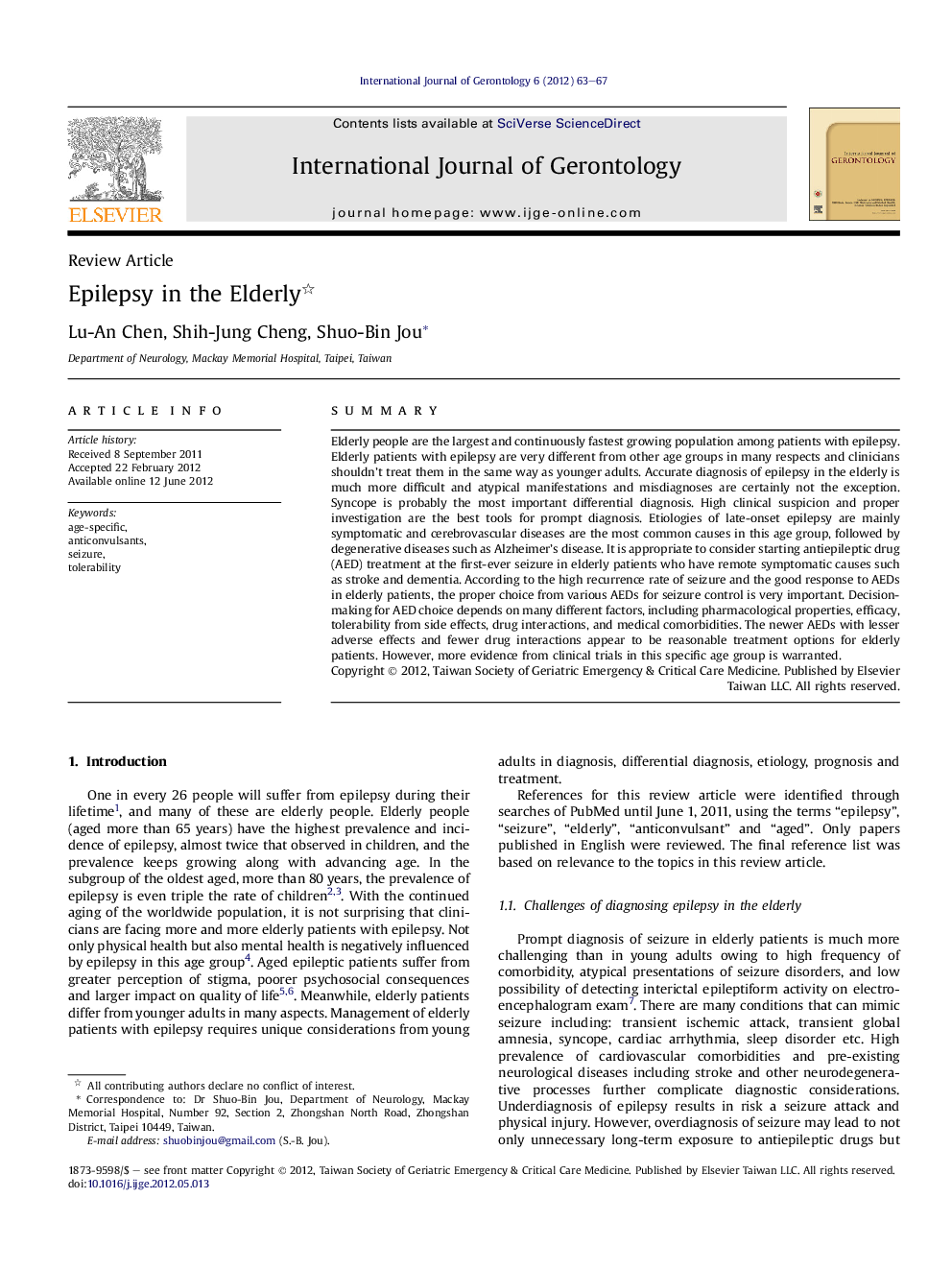| Article ID | Journal | Published Year | Pages | File Type |
|---|---|---|---|---|
| 3325483 | International Journal of Gerontology | 2012 | 5 Pages |
SummaryElderly people are the largest and continuously fastest growing population among patients with epilepsy. Elderly patients with epilepsy are very different from other age groups in many respects and clinicians shouldn’t treat them in the same way as younger adults. Accurate diagnosis of epilepsy in the elderly is much more difficult and atypical manifestations and misdiagnoses are certainly not the exception. Syncope is probably the most important differential diagnosis. High clinical suspicion and proper investigation are the best tools for prompt diagnosis. Etiologies of late-onset epilepsy are mainly symptomatic and cerebrovascular diseases are the most common causes in this age group, followed by degenerative diseases such as Alzheimer’s disease. It is appropriate to consider starting antiepileptic drug (AED) treatment at the first-ever seizure in elderly patients who have remote symptomatic causes such as stroke and dementia. According to the high recurrence rate of seizure and the good response to AEDs in elderly patients, the proper choice from various AEDs for seizure control is very important. Decision-making for AED choice depends on many different factors, including pharmacological properties, efficacy, tolerability from side effects, drug interactions, and medical comorbidities. The newer AEDs with lesser adverse effects and fewer drug interactions appear to be reasonable treatment options for elderly patients. However, more evidence from clinical trials in this specific age group is warranted.
